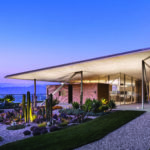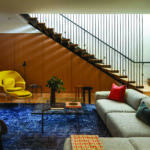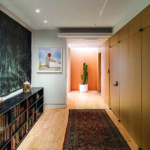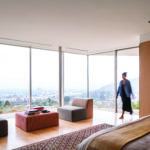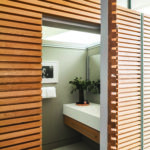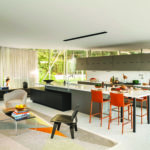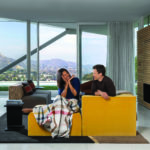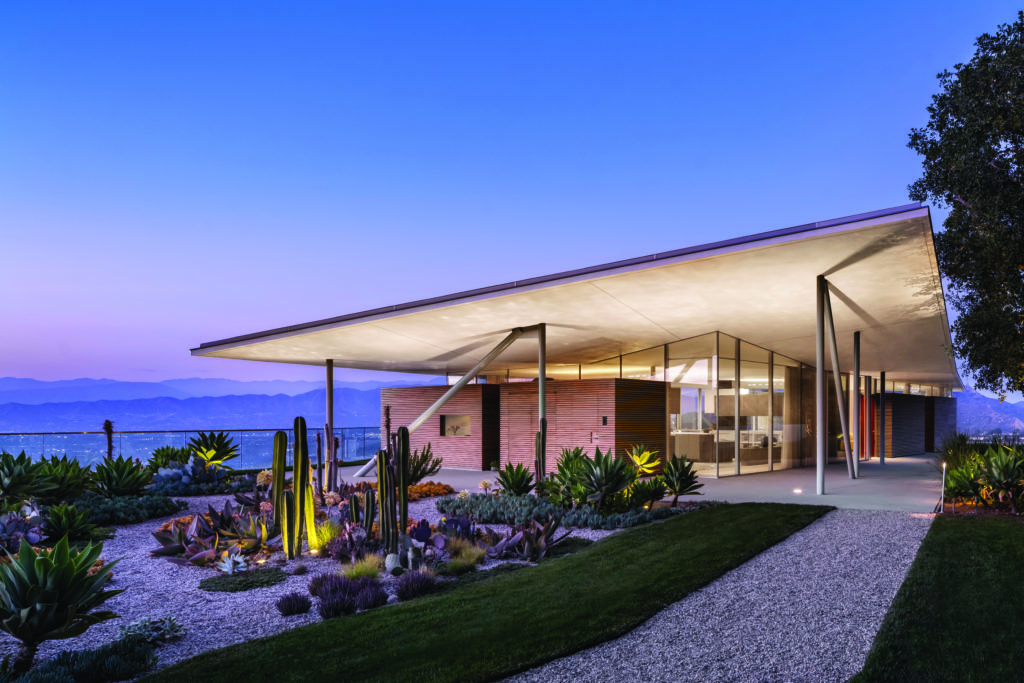Good GLUCK
Author:Abigail StoneGLUCK+ designs a modern home in L.A. with roots in the past and an eye on the future
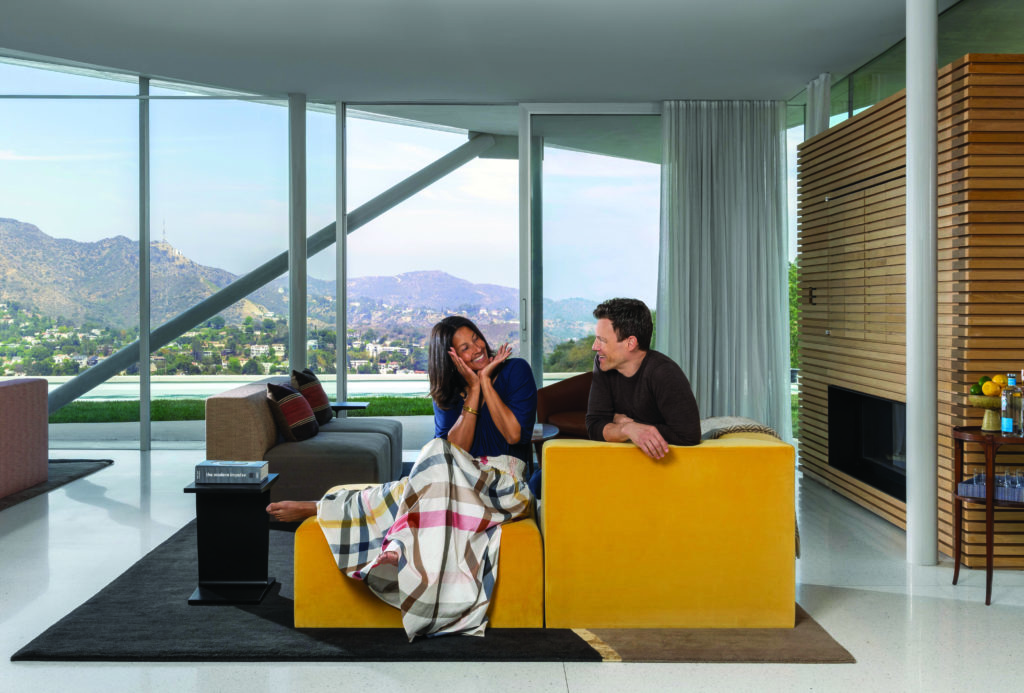
Homeowner and film producer Will Gluck, whose credits include the recently released Peter Rabbit 2: The Runaway and his wife, writer Trista Gladden, in the living room. Photos by Paul Vu.
“It turned out to be the perfect site for what we wanted to do,”says architect Peter Gluck of the northward-facing piece of land on Mulholland Drive that showcases the house now dubbed the “California House.” Long considered unbuildable, the awkward promontory ended up being the ideal plinth on which to construct an East Coast ode to West Coast case study architecture. “The intention was to make it a buildable site, given what you can do structurally now.”
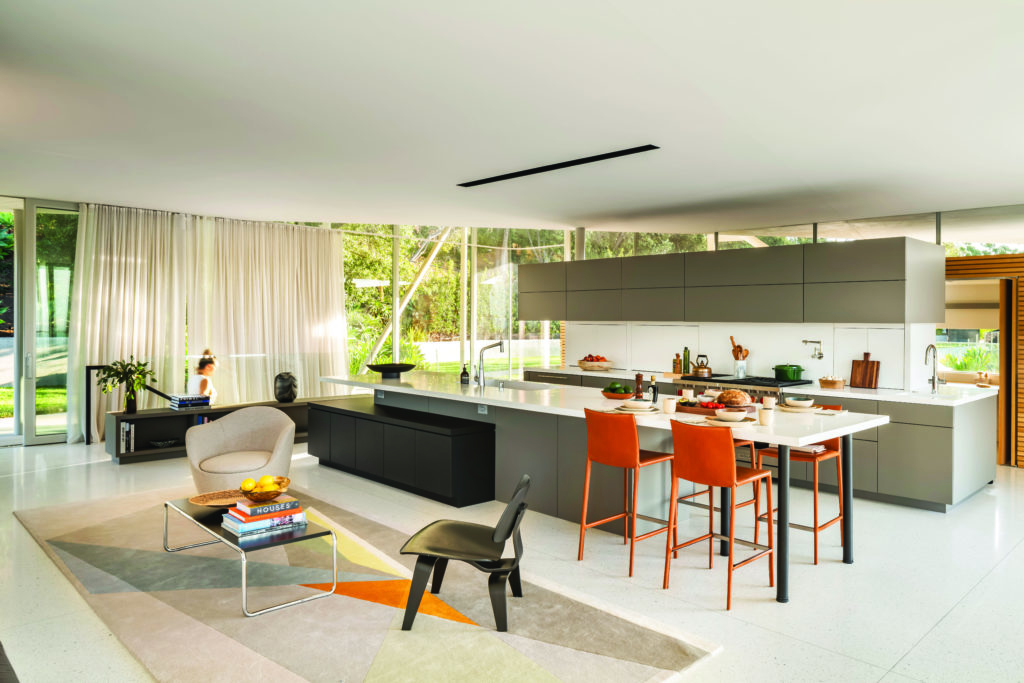
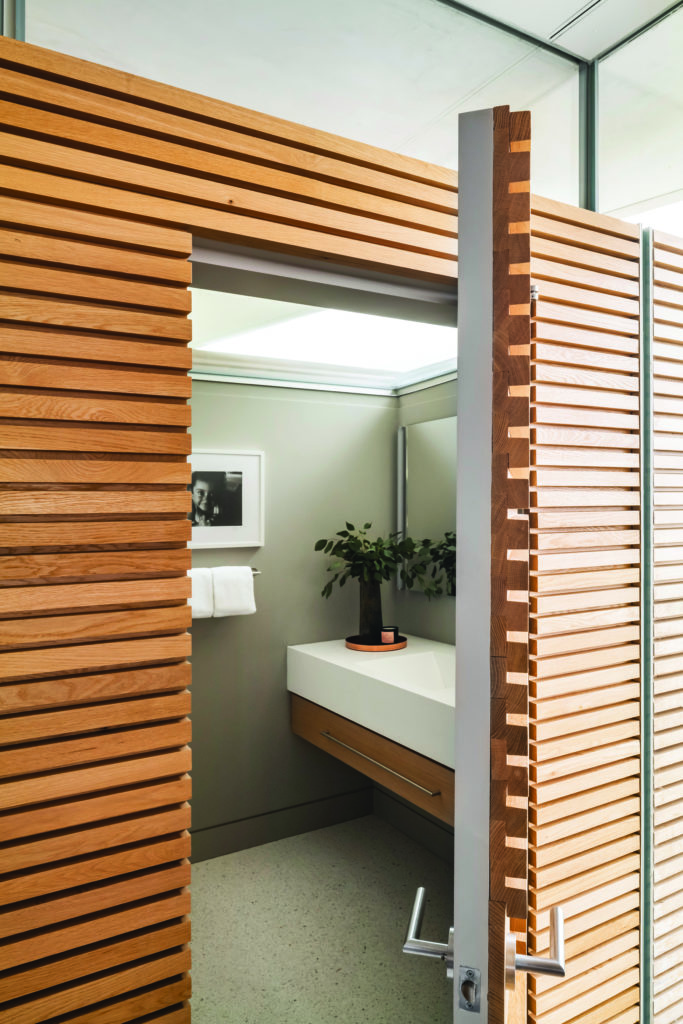
Designed and built for Gluck’s son Will, a film producer, and his family, the home’s sleek, simple profile stands in sharp contrast to its overblown neighbors. “We wanted to have the visible part of the house be as small as possible,” Gluck explains, “So it’s just a glass box with wood boxes for all the practical matters of living.” The ethereal pavilion houses the public rooms; the lower level, tucked into the mountain, conceals the family’s private quarters. “We do a lot of houses this way,” says Gluck. “In addition to anchoring the project firmly into the landscape, there are building regulations that are made easier when you do that.”
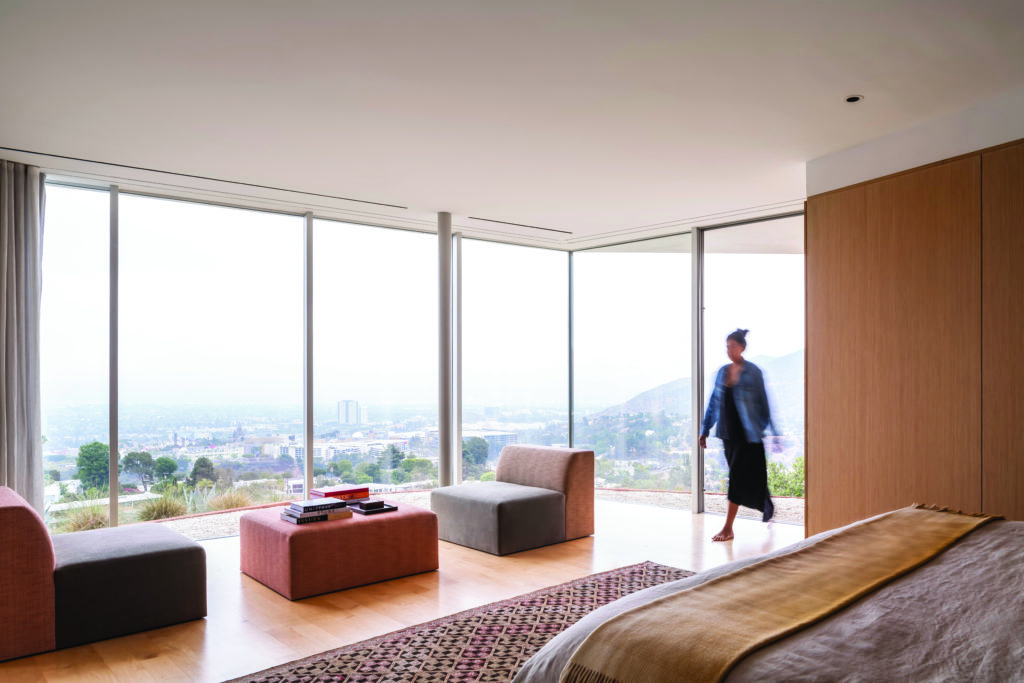
The inspiration for the design nods to Gluck’s first project, a home he hand-built for his parents over five decades ago on a Long Island beach. “It’s a more present-day view,” he says. Like that structure, this one exemplifies the principles made famous by the Case Study homes and championed by California designers ever since: the smooth transition from indoors to out, casual open-plan living and a controlled use of simple materials.
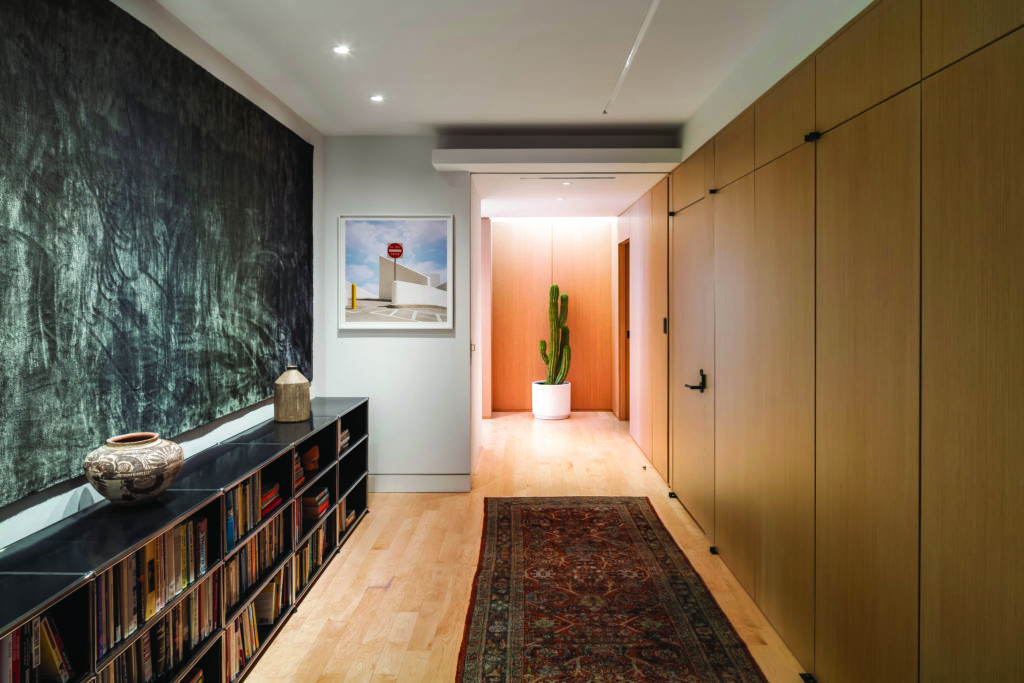
Like that one, it partners with the realities of the environment. “In the Hamptons, the challenge was the ocean. In Los Angeles, it’s earthquakes,” says Gluck. And, like that one, he and his team were not only the designers but the builders. “We make the drawings and we’re also the contractors,” Gluck explains. “If we’d given it to a regular contractor, who knows what would have happened. Anything that looks straightforward is really complicated to construct.” Witness the slatted cabinets, faced with thermally modified clear maple slats on the exterior and rift white oak on the interior, each piece individually cut, measured and assembled, or the cantilevered floating roof, delicately held aloft by a smattering of slender columns. A freestanding sculptural divider allows camouflaged access to electrical, sound and sprinkler services to the roof. It seems that the more things change, the more they stay the same. “You know more, but it’s still the same impulses,” says Gluck, “Not the forms or the shapes but the response to conditions.” Mother Nature and GLUCK+: perennial allies in design.
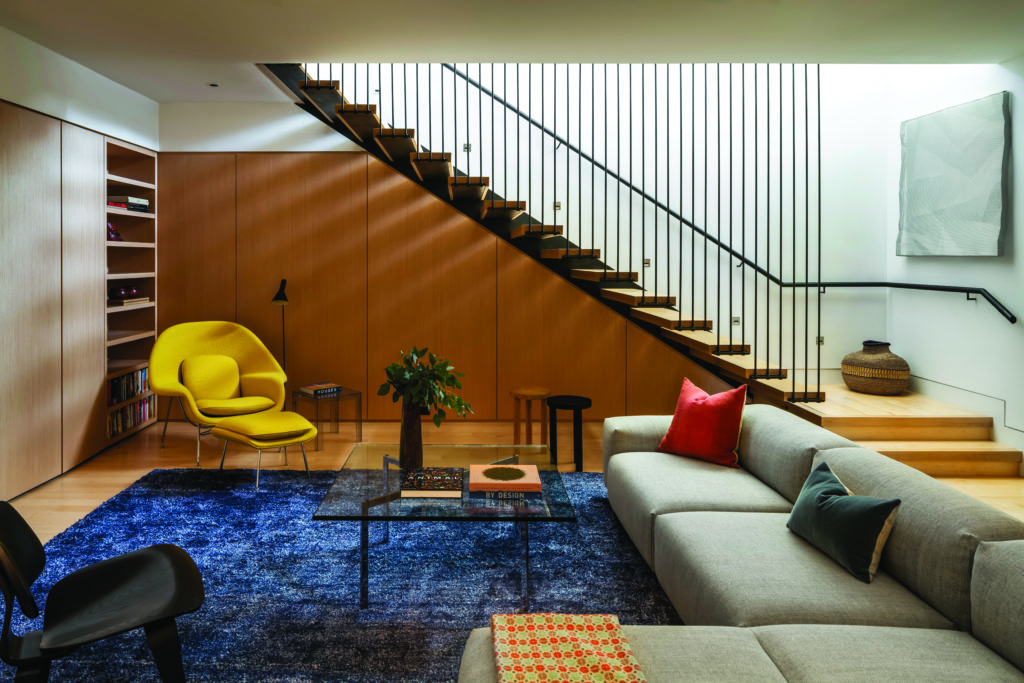
The home’s den is tucked into the space at the bottom of the stairs where light pours in through the stairwell. Photos by Paul Vu.
